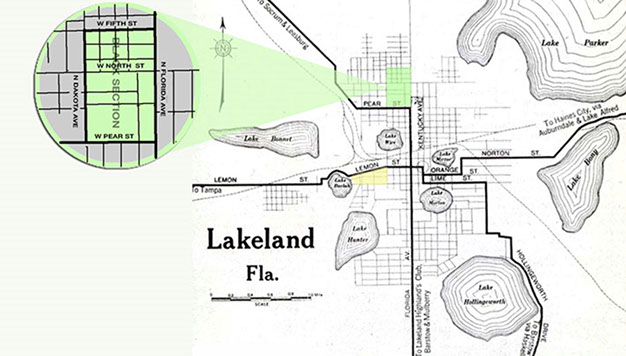History of the Community
1885 - 1905
1906 - 1925
1926 - 1945
1946 - 1965
1966 - 1985
Years:
Turn of the century

Through the turn of the Century the phosphate, citrus and railroad industries expanded rapidly in Polk County. The economic explosion meant more jobs; and Blacks were being paid a decent salary. This provided an incentive for even more Blacks including families to migrate to the area.
The growth in the Black population caused the community to expand beyond the original settlement. Most of the expansion was in an area north of downtown Lakeland called at the time, Teaspoon Hill. The exact origin of the name is unclear. However, it is rumored that residents of the original Black settlement began referring to the new neighborhood as the "teaspoon of Blacks on the hill." The Hill's borders were from N Dakota Avenue--now Martin Luther King Avenue east to N Florida Avenue, and from Pear Street north to N Fifth Street.
Like the original settlement, Black businesses began to develop on the The Hill. This included service jobs such as cleaners, grocers, barbers, etc. Most of the businesses developed along North Florida Avenue between Pear Street and North Avenue-- now Memorial Boulevard.
During this period, several notable Black figures arrived in Lakeland including Reverend H.K. Moorehead, a minister, William A. Rochelle, an educator, and Dr. D.J. Simpson, Lakeland's first Black doctor. In Reverend Moorehead's honor, Blacks began to refer to the area where Blacks originally settled as Moorehead. Professor Rochelle and Dr. Simpson were recognized later in life with a school and a park respectively named in their honor.
A monumental event occurred on March 5, 1912 when Booker T. Washington spoke in Lakeland. It is reported that more than 2,000 Black and white spectators paid 50 cents each to attend the 90 minute presentation. According to a local newspaper it was "the largest audience that has assembled in Lakeland in some time."
It is noted that Booker T. Washington and his entourage lived in the homes of some Black during his stay. Shortly thereafter, residents began referring to the area located north of W 5th Street and Between N Florida Avenue and N Dakota Avenue--now Martin Luther King Avenue, as Washington Park. Years later, a public park and housing project were named in Washington's honor.
In the early 1920s, after considerable pressure and petitions from the Black community, Polk County sought to invest in schools for the Blacks in Lakeland. In addition to the Colored School, the county provided funding for grammar and high school--both named Washington Park for the area they were located.

Booker T Washington (1912) speaks at Lakeland Ball Park
Opportunity & Growth
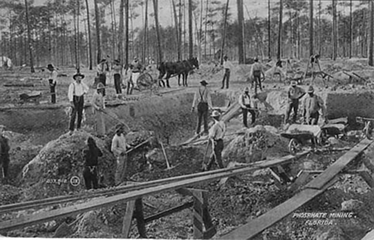
Phosphate Quarries
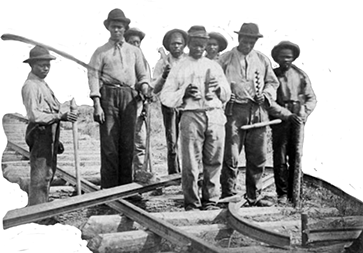
Railroad Crew
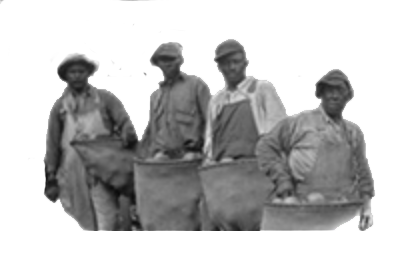
Citrus Pickers
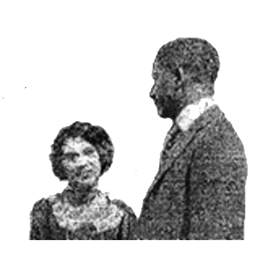
Dr. D.J. Simpson & Wife
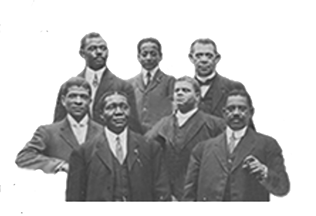
Booker T Washington Group: back row -
HK Moorehead

William A Rochelle

Booker T Washington Park
Missouri Ave & 8th Street
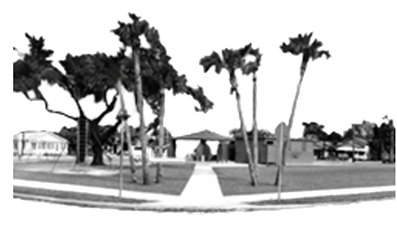
These pages contain a small portion of information about the people and places that made up Lakeland's Black community the first 100 years. The sources include articles by LaFrancine Burton, the book by Dr. Neriah Roberts, Facebook, community members, etc. Contact Us if you have information like pictures you don't mind sharing.
